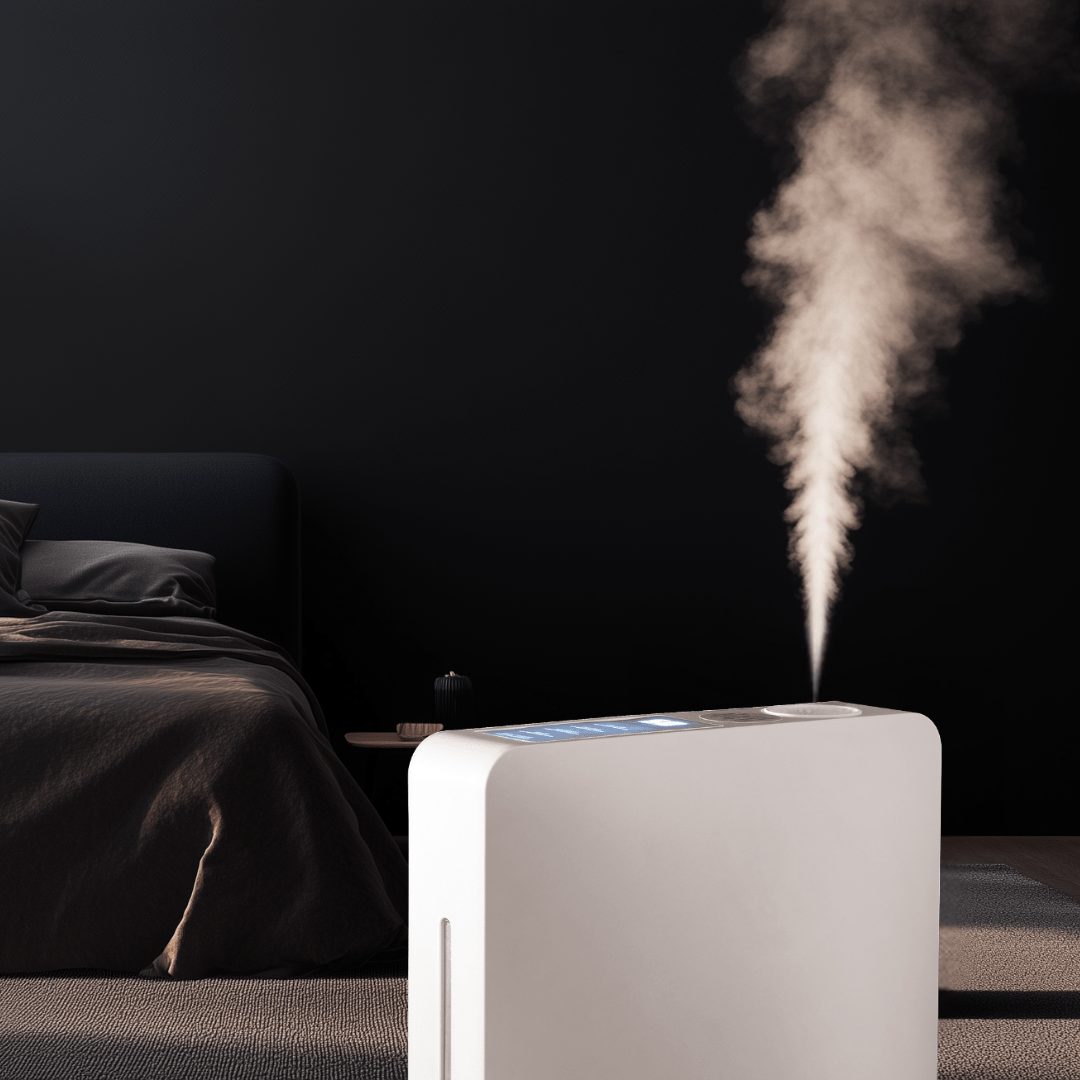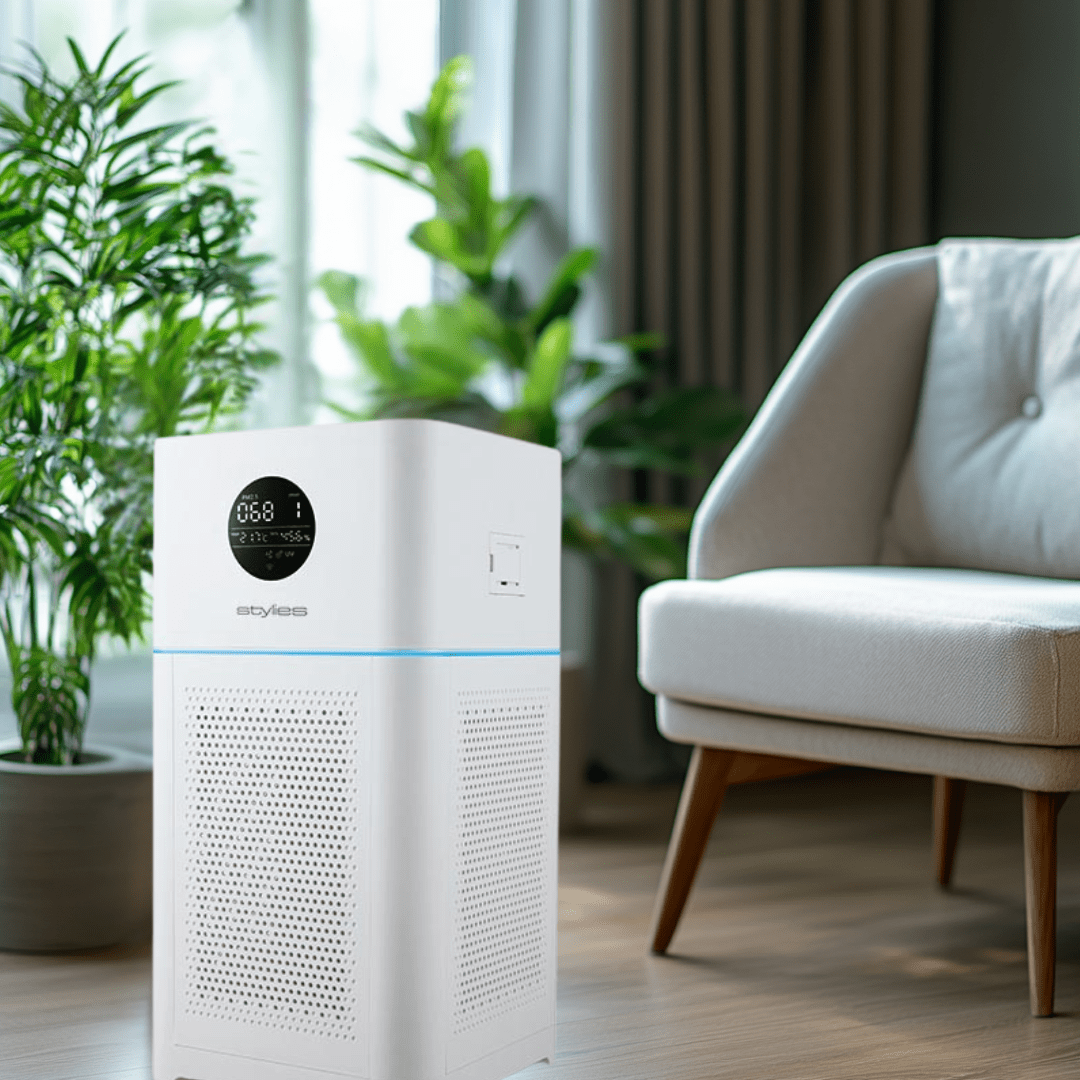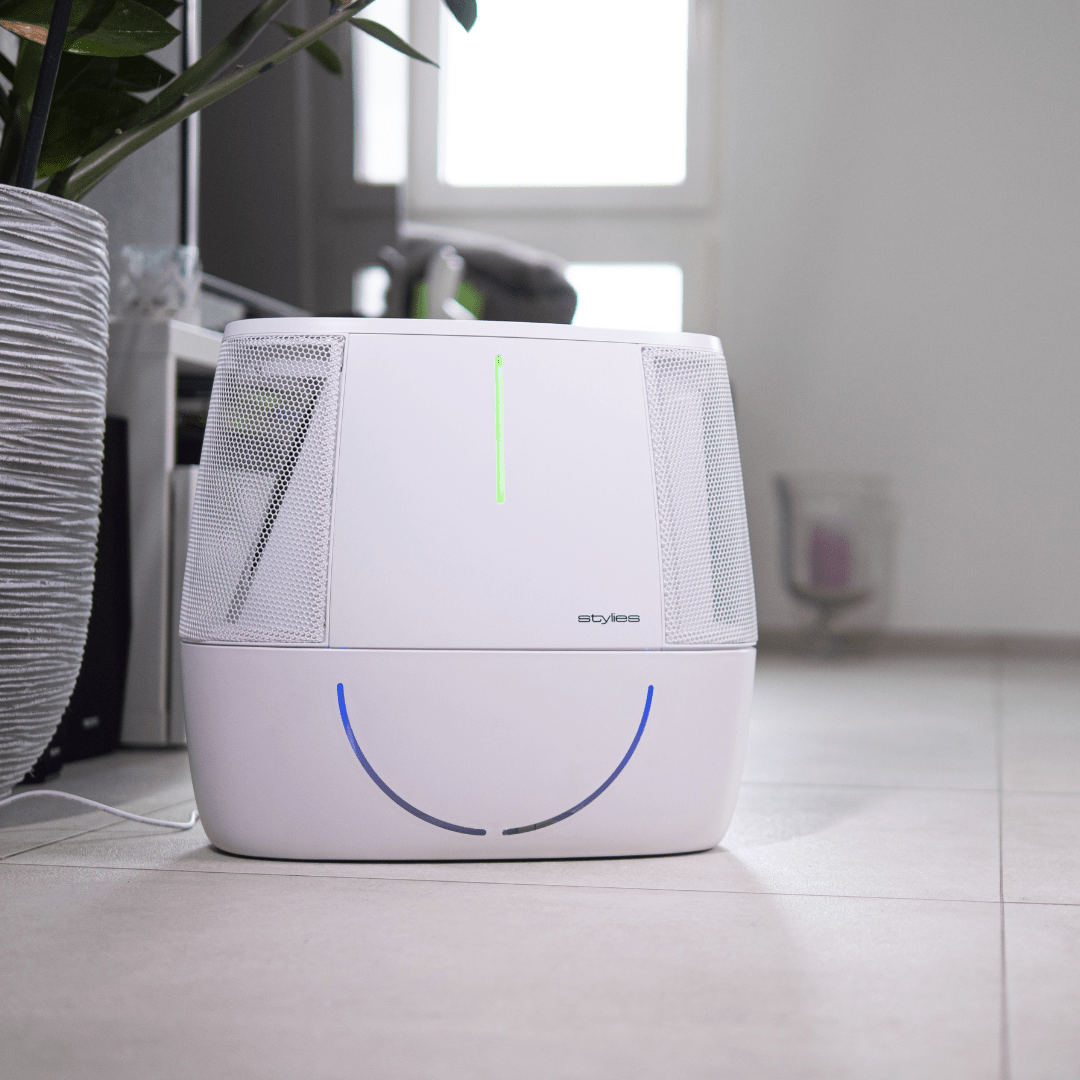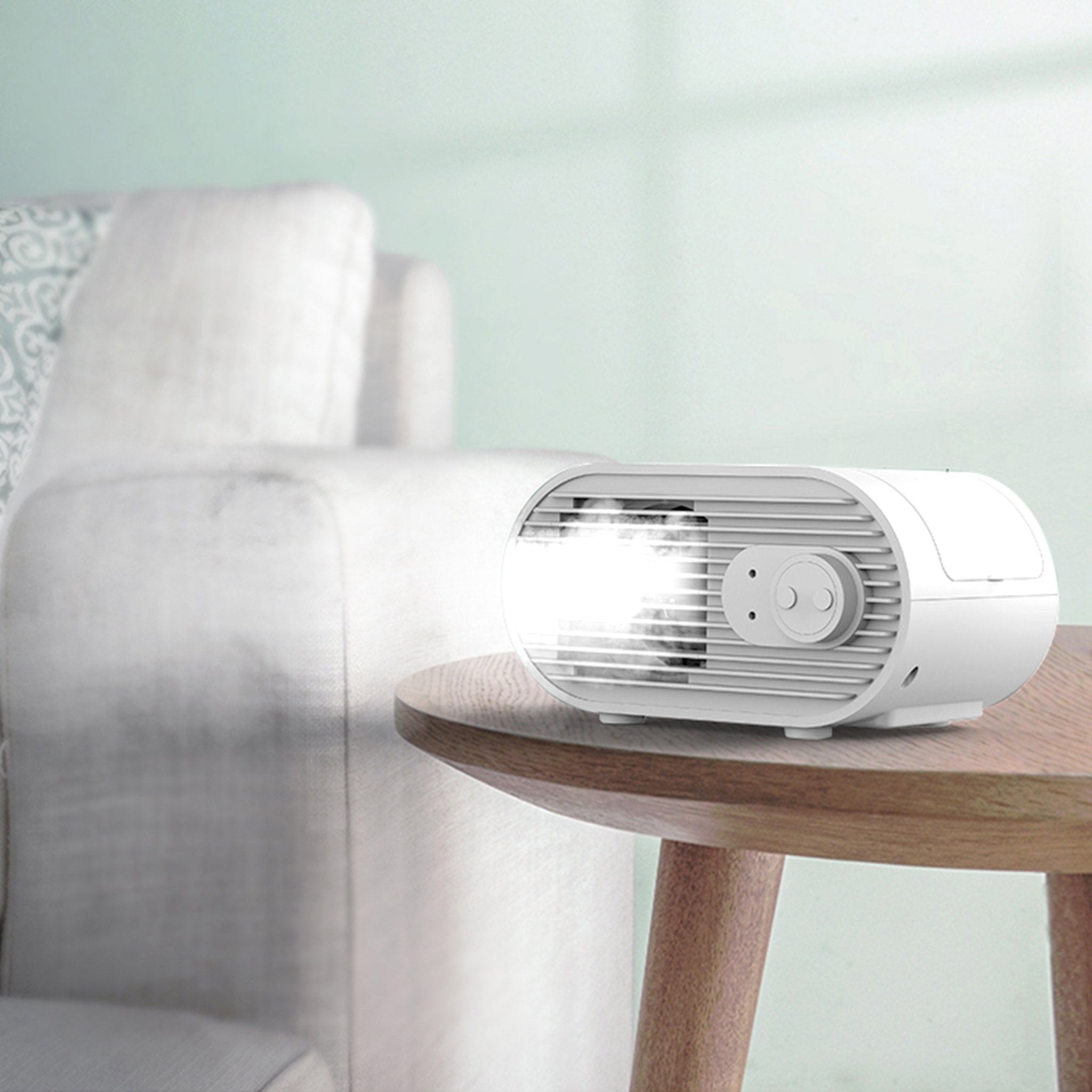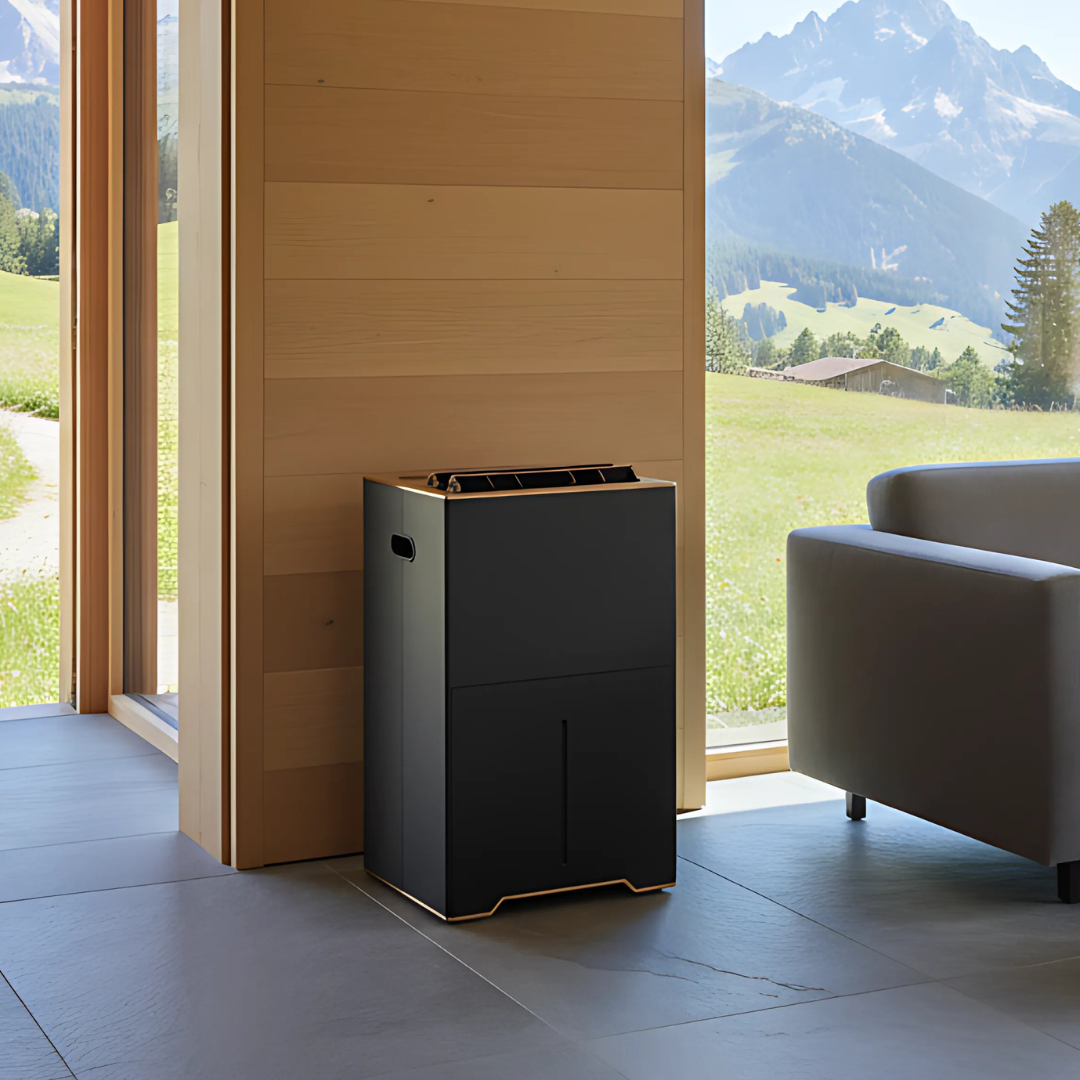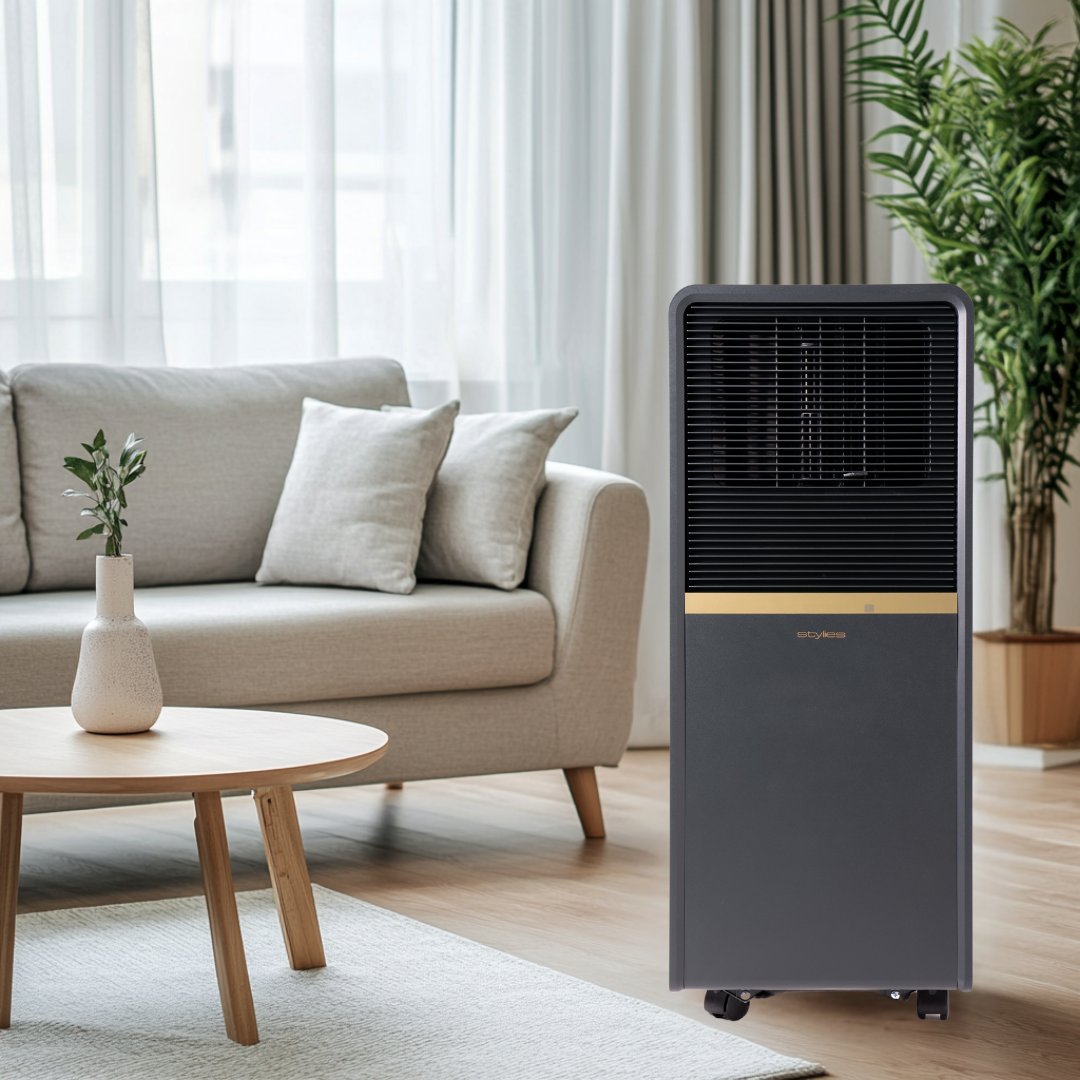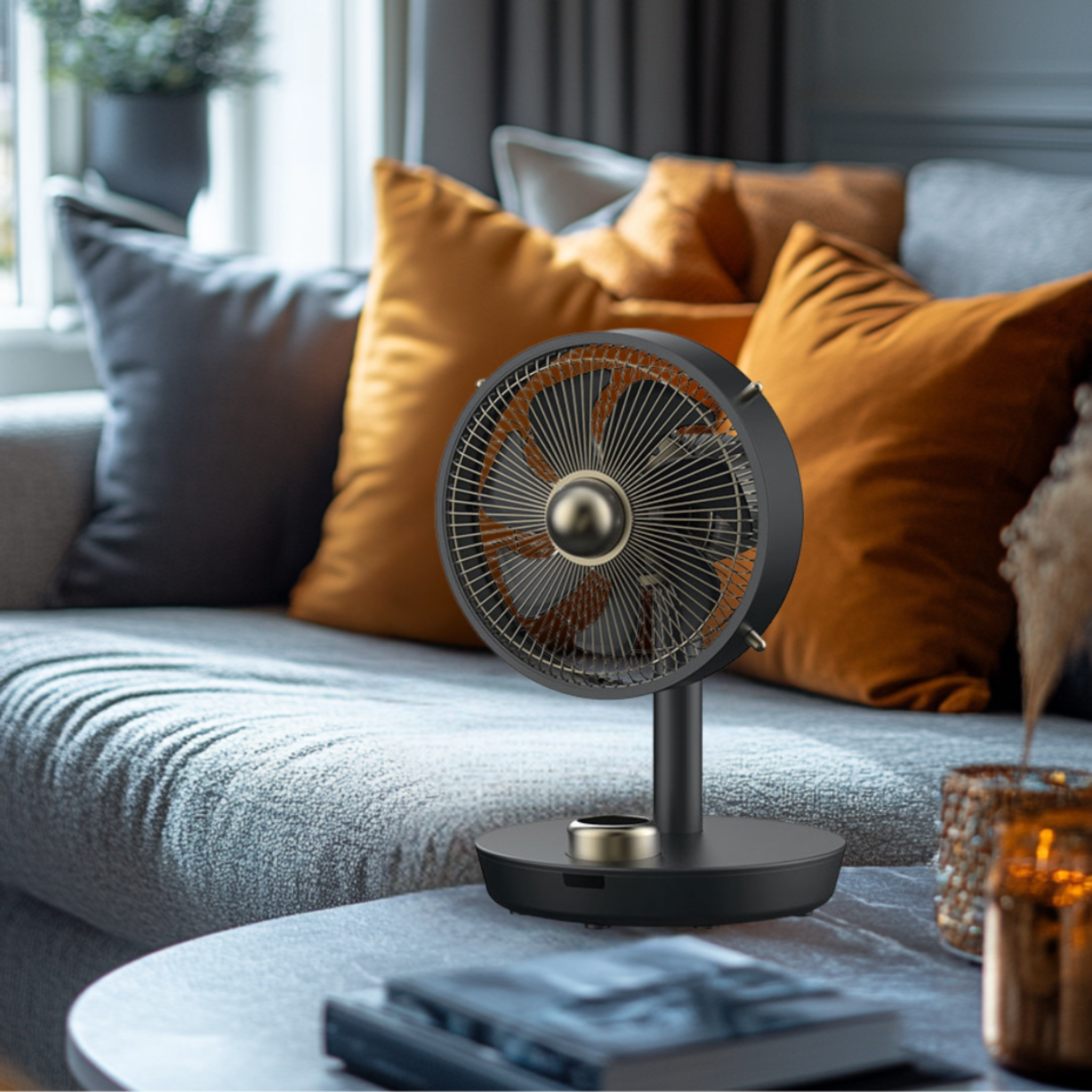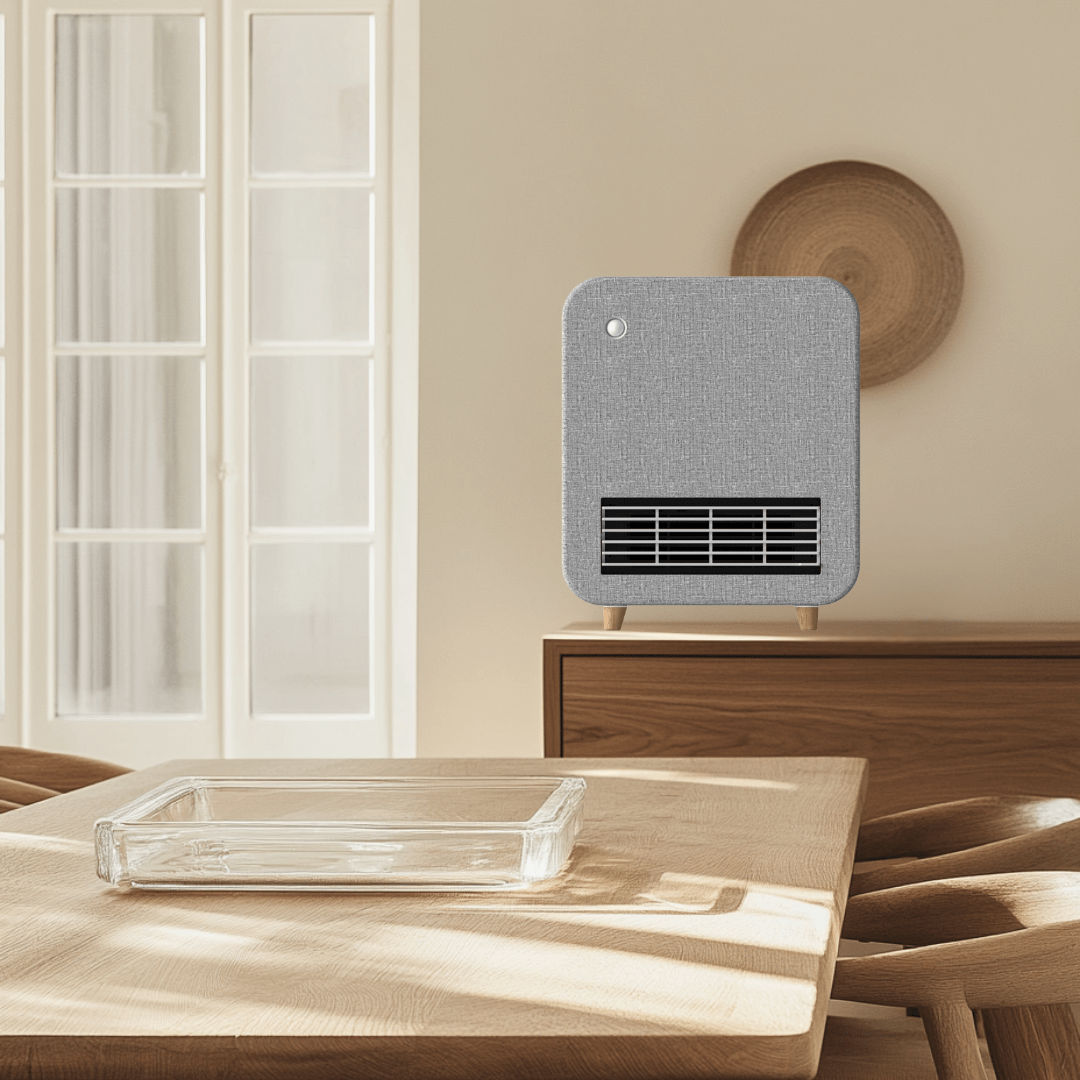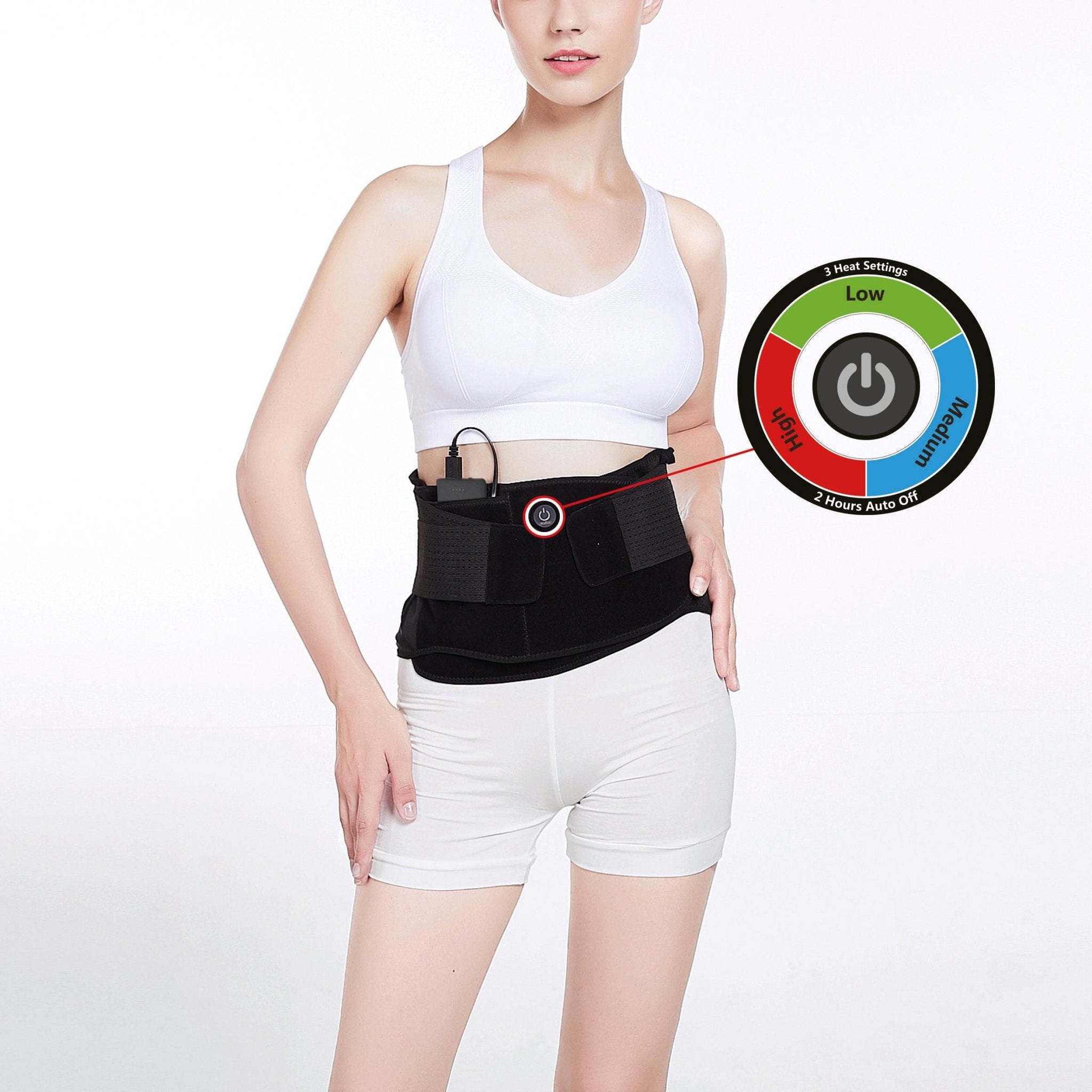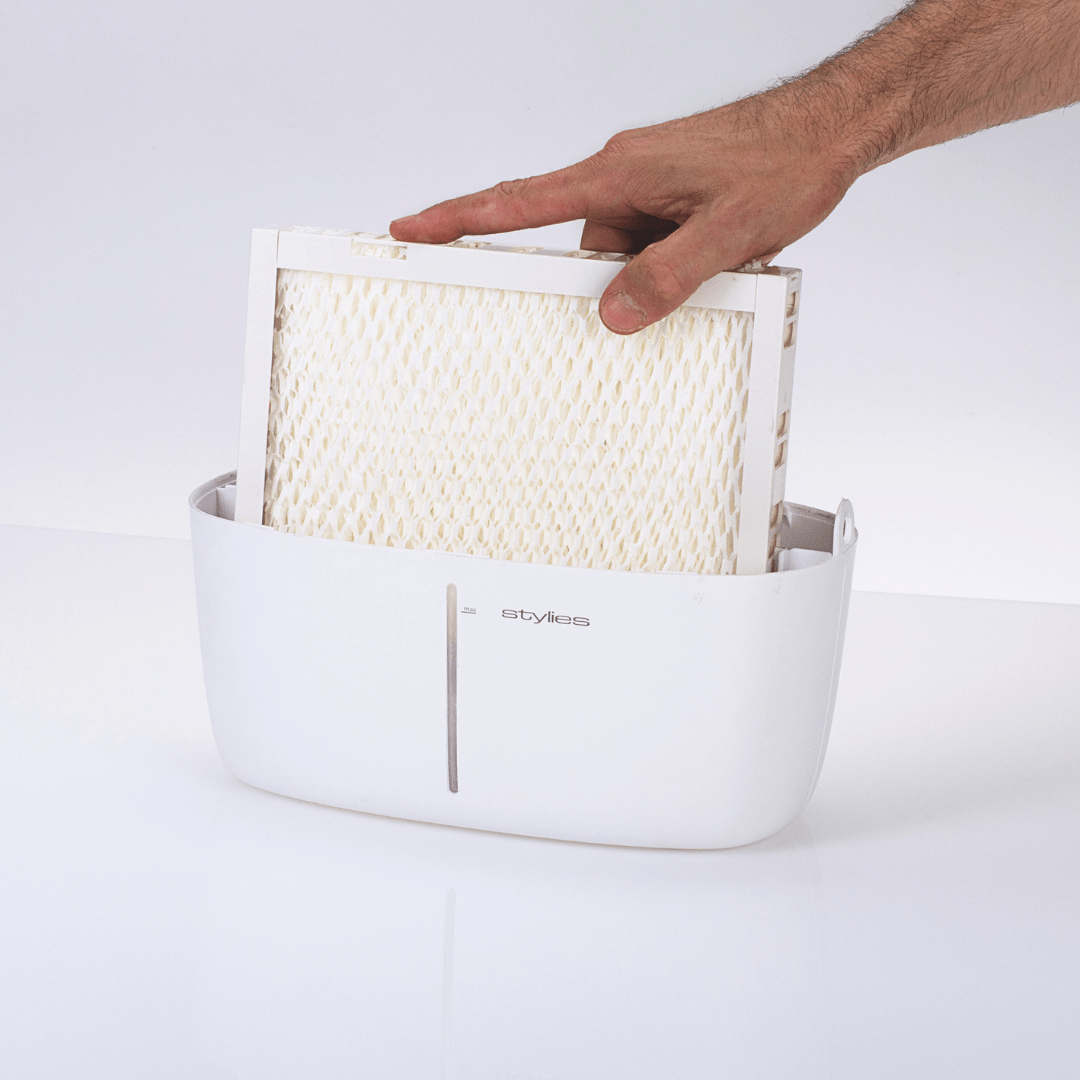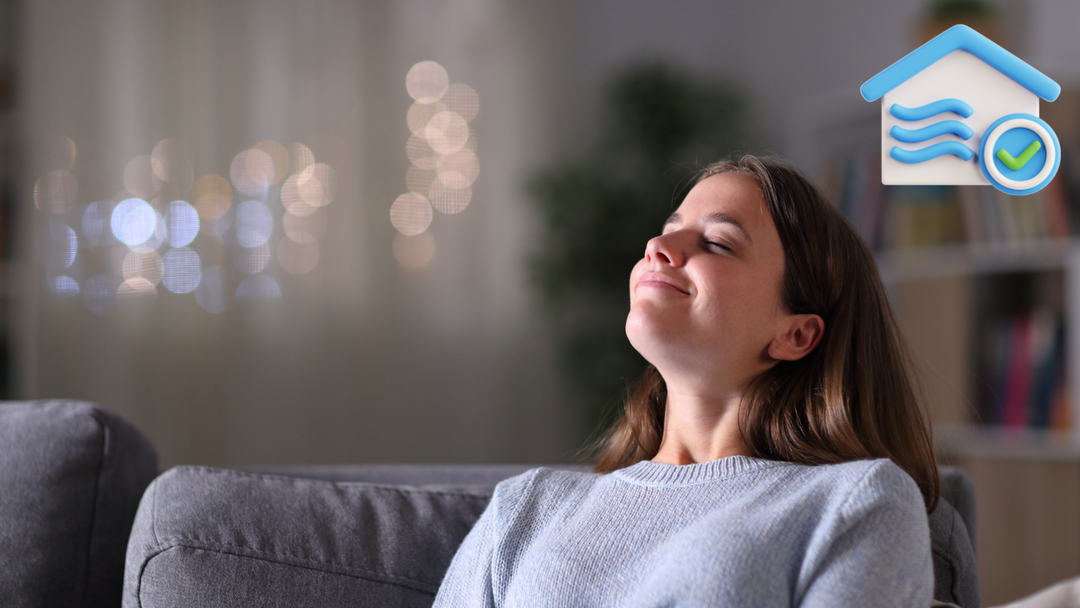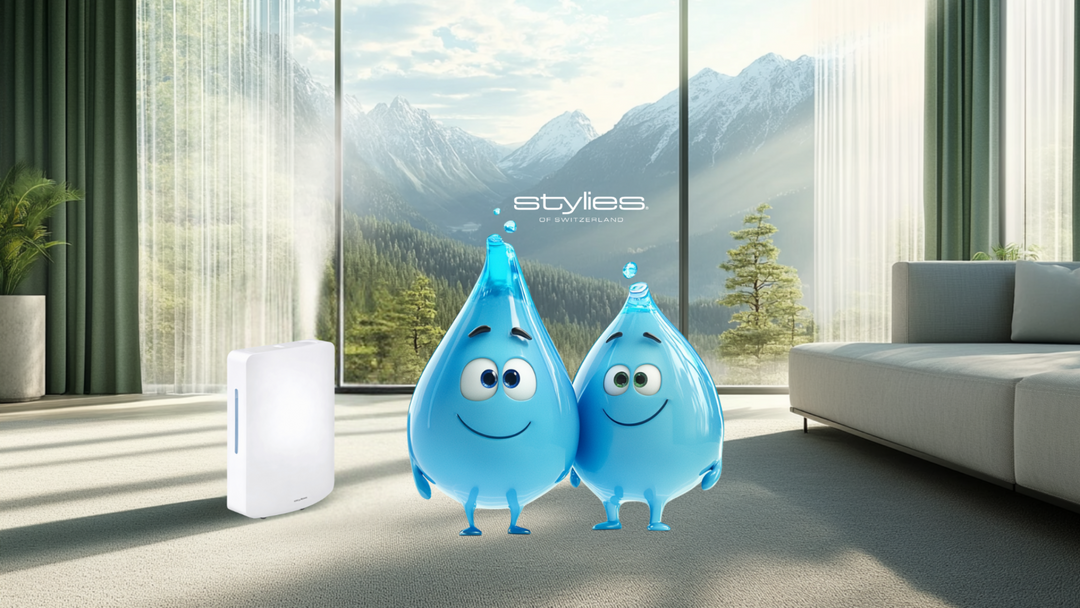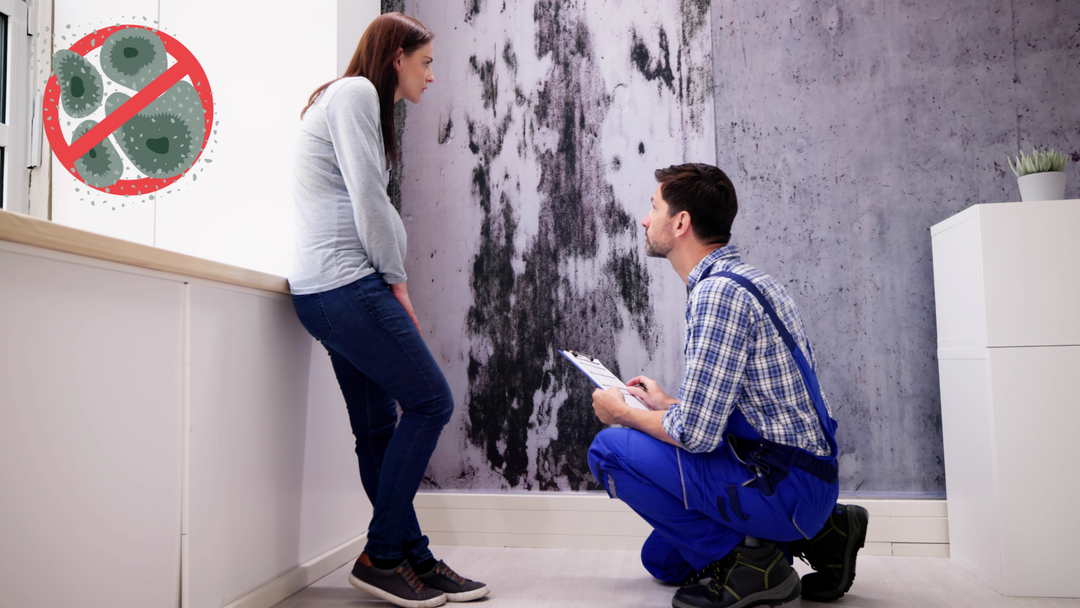Reduce humidity in living spaces
The term humidity briefly explained:
Humidity at home describes how much water vapor is contained in the air. It is usually referred to as relative humidity , which is expressed as a percentage (%). This number shows how much moisture the air currently contains compared to the maximum possible amount at a certain temperature. Example: At 50% relative humidity, the air contains exactly half as much water as it could hold.
Absolute humidity indicates how many grams of water are actually contained per cubic meter of air (g/m³), regardless of temperature or pressure.
However, we cannot immediately notice if the humidity is too high or too low .


